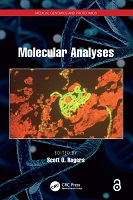Chapter 5 Forensic DNA Samples
Proposal review
Collection and Handling
| dc.contributor.author | benecke, dr mark | |
| dc.date.accessioned | 2023-12-18T10:52:50Z | |
| dc.date.available | 2023-12-18T10:52:50Z | |
| dc.date.issued | 2022 | |
| dc.identifier.uri | https://library.oapen.org/handle/20.500.12657/86218 | |
| dc.description.abstract | From a technical and criminalistic point of view, DNA can be collected and stored like most visible biological stains. Crucial considerations in the examination of evidence include photographic documentation, and careful storage of the samples under dry and cool conditions. Special aids such as sexual assault kits, swabs, drying devices, and filter paper treated with denaturants are available and should be used. However, DNA collection in forensic environments is not a merely technical but also a criminalistic task. Swabbing of clothing items, especially of skin, should be performed as soon as possible in forensic and police investigations. For example, DNA typing was possible in the following cases where swabs had been collected early at the scene of the crime. Before swabbing, intelligent criminalistic assumptions concerning the location of the invisible yet possible stains had been made. | en_US |
| dc.language | English | en_US |
| dc.subject.other | Gene Sequences, Next Generation sequencing, Nucleotide, Phylogenomics | en_US |
| dc.title | Chapter 5 Forensic DNA Samples | en_US |
| dc.title.alternative | Collection and Handling | en_US |
| dc.type | chapter | |
| oapen.identifier.doi | 10.1201/9781003247432-5 | en_US |
| oapen.relation.isPublishedBy | 7b3c7b10-5b1e-40b3-860e-c6dd5197f0bb | en_US |
| oapen.relation.isPartOfBook | 2e3cfc91-e282-4348-a580-9f09f0e56c22 | en_US |
| oapen.relation.isbn | 9780367903718 | en_US |
| oapen.relation.isbn | 9781032161907 | en_US |
| oapen.imprint | CRC Press | en_US |
| oapen.pages | 23 | en_US |
| peerreview.anonymity | Single-anonymised | |
| peerreview.id | bc80075c-96cc-4740-a9f3-a234bc2598f1 | |
| peerreview.open.review | No | |
| peerreview.publish.responsibility | Publisher | |
| peerreview.review.stage | Pre-publication | |
| peerreview.review.type | Proposal | |
| peerreview.reviewer.type | Internal editor | |
| peerreview.reviewer.type | External peer reviewer | |
| peerreview.title | Proposal review | |
| oapen.review.comments | Taylor & Francis open access titles are reviewed as a minimum at proposal stage by at least two external peer reviewers and an internal editor (additional reviews may be sought and additional content reviewed as required). |

